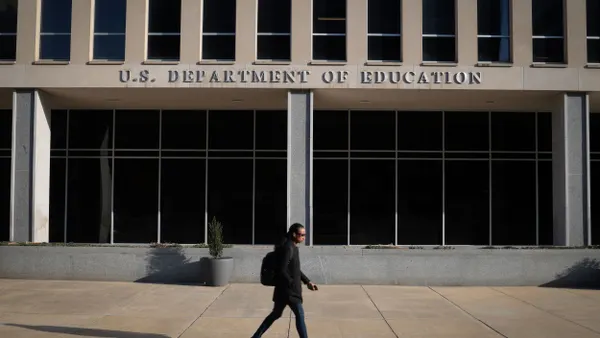Dive Brief:
- Students are picking up saws and hammers to build tiny houses as part of their geometry lessons. The program, “Geometry in Construction,” priced at $1,695 for each teacher trained, is now in more than 400 high schools across the country. Grades are awarded by fellow students, not the teacher, so children learn the value of teamwork in the working world, according to the Hechinger Report.
- Getting hands-on lessons — building something “useful,” as one student noted — helps them learn more concretely why an accurate measurement of an angle is important. U.S. students rank 38th out of 71 countries in the world in math. Finding new ways to embed math concepts more vividly, then, is one path some educators are taking.
- Far from simple, the class has reportedly reduced honor math students to tears when they find a door is not closing properly, or a home may not pass inspection. But two Colorado high schools surveying their students found that those in the class scored higher than average math scores than those in normal geometry classes.
Dive Insight:
Hand-on learning in classes such as math and science can help to embed concepts more deeply than traditional styles of teaching. Complex ideas, for example, can be broken into simpler steps, allowing students to work through lessons more slowly. That’s certainly the idea behind makerspaces, which pair the physical to the conceptual, letting children play games or even 3D print toys while they learn the basics of coding.
Curriculum designers and teachers who aren’t familiar with hands-on learning can find outside partners to help, groups trained to scaffold educators in using these methods. New York University’s School of Engineering program TeachEngineering, is a database of free science lessons that showcase active learning for K-12 students in classrooms. Telecom giant Verizon has also catalogued hands-on STEM lessons, some from Amy Poehler’s Smart Girls site, that can be woven into classes.
Not every school has the resources, not to mention space, to let students design a home as they learn the basics of angles. But giving a child some paper straws, a bottle of glue and a pair scissors can unpack geometry lessons more vividly in their mind than a five-year-old textbook and a plastic compass ever will.











